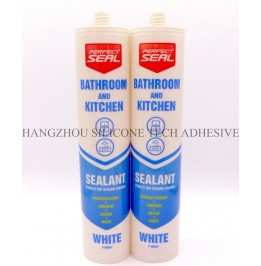Sealant performance and longevity depend heavily on seasonal environmental factors. Temperature fluctuations, humidity shifts, and precipitation patterns across spring, summer, autumn, and winter create unique challenges for maintaining adhesion, flexibility, and durability. Adapting maintenance strategies to align with seasonal conditions ensures optimal results and prevents premature failure.

Spring’s unpredictable weather, characterized by rising temperatures and intermittent rain, demands proactive sealant care. As snow melts and humidity levels fluctuate, moisture can accumulate in joints and cracks, weakening adhesion. Inspecting sealants for signs of condensation or water pooling is critical during this season. Look for discoloration, softening, or bubbling, which indicate trapped moisture interfering with curing or causing degradation.
Ventilation adjustments are key in enclosed spaces like basements or bathrooms. Increasing airflow with fans or dehumidifiers helps reduce residual humidity from winter and prevents mold growth. For exterior applications, check sealants around windows, doors, and rooflines after heavy rain. Reapply caulk if gaps appear due to thermal expansion from fluctuating temperatures.
Cleaning debris from sealant lines is equally important. Spring’s windy conditions often deposit dirt, pollen, or organic matter into joints, creating a breeding ground for mold. Use soft brushes and mild detergents to remove buildup without damaging the sealant surface.
Summer’s high temperatures and intense sunlight accelerate sealant aging, particularly for exterior applications. Prolonged UV exposure can cause discoloration, cracking, or loss of elasticity in sealants lacking UV resistance. Inspecting south-facing joints and areas exposed to direct sunlight becomes essential. Look for brittleness or shrinkage, which compromise waterproofing capabilities.
Heat also affects curing rates. In extremely hot climates, solvent-based sealants may dry too quickly, leading to surface cracks or incomplete adhesion. Conversely, high humidity in some regions can slow curing, creating a sticky residue. Adjusting application times to cooler mornings or evenings minimizes these risks.
Thermal expansion is another concern. Materials like concrete, wood, and metal expand under heat, stressing sealant joints. Flexible sealants designed to accommodate movement are preferable in summer. Regularly check joints for signs of stress, such as pulling away from substrates, and reapply as needed to maintain a watertight seal.
Autumn’s cooling temperatures and increasing rainfall require preparation for winter. As leaves fall and organic debris accumulates, cleaning gutters and sealant lines prevents blockages that trap moisture. Clogged gutters can force water to overflow, seeping into joints and causing freeze-thaw damage later.
Inspecting sealants for existing cracks or gaps is crucial before winter arrives. Even minor openings can allow water infiltration, which expands when frozen, exacerbating damage. Use a putty knife or sealant remover to clean out old material, then apply fresh sealant to ensure a tight bond.
Humidity levels in autumn often hover between 60–80%, which can delay curing for moisture-sensitive sealants. Allow extra drying time before exposing newly applied sealants to rain or dew. In regions with early frosts, schedule applications at least 48 hours before temperatures drop below freezing to prevent crystallization in the sealant.
Winter’s freezing temperatures pose significant challenges for sealant application and maintenance. Most sealants require temperatures above 40°F (4°C) for proper curing. Applying sealants in cold weather can lead to brittleness, poor adhesion, or extended drying times. If winter repairs are unavoidable, use cold-weather formulations designed to cure at lower temperatures, though these may have limited flexibility.
Indoor sealants in unheated spaces, like garages or sheds, are also at risk. Condensation from temperature differentials can form on cold surfaces, leading to mold or adhesion failure. Using space heaters to maintain minimal temperatures during curing helps, but ensure proper ventilation to avoid fire hazards.
For exterior projects, protect freshly applied sealants from snow and ice. Cover joints with plastic sheeting or tarps until fully cured. After winter, inspect sealants for damage caused by freeze-thaw cycles. Look for crumbling edges, gaps, or discoloration, and replace compromised sections promptly to prevent water infiltration in spring.
By tailoring sealant maintenance to seasonal conditions, property owners and contractors can extend the lifespan of joints and prevent costly repairs. Regular inspections, timely reapplications, and environmental adaptations ensure sealants remain effective year-round.
Copyright 2019 by Hangzhou Silicone Tech Adhesive Co., Ltd. All rights reserved.
Bathroom Sealant | Acrylic Sealant | Dow Corning 795 | Aquarium Sealant | Dow Corning 732 | Clear Silicone Sealant | Polysulfide Sealant | Glazing Sealant | Mirror Sealant | IG Sealant
Powered by Onepound